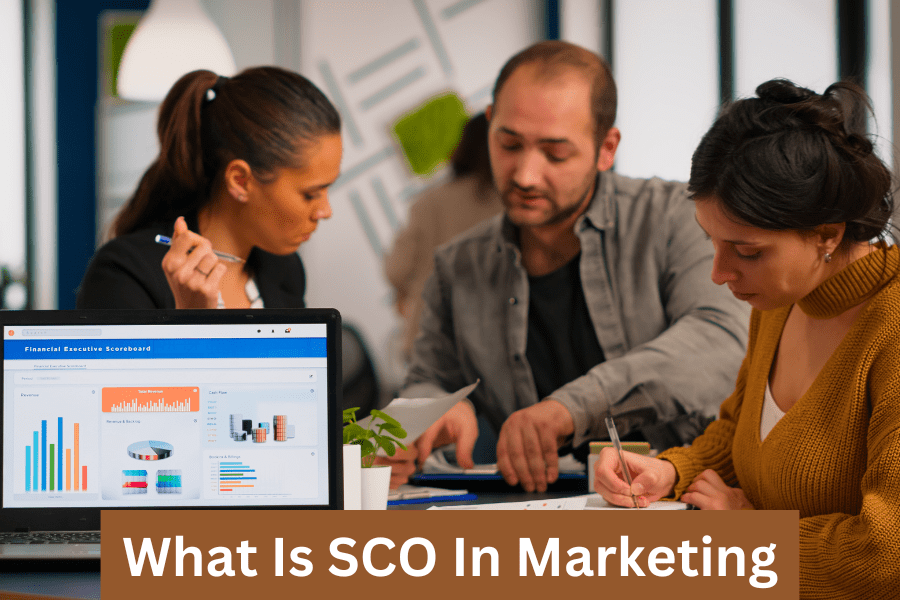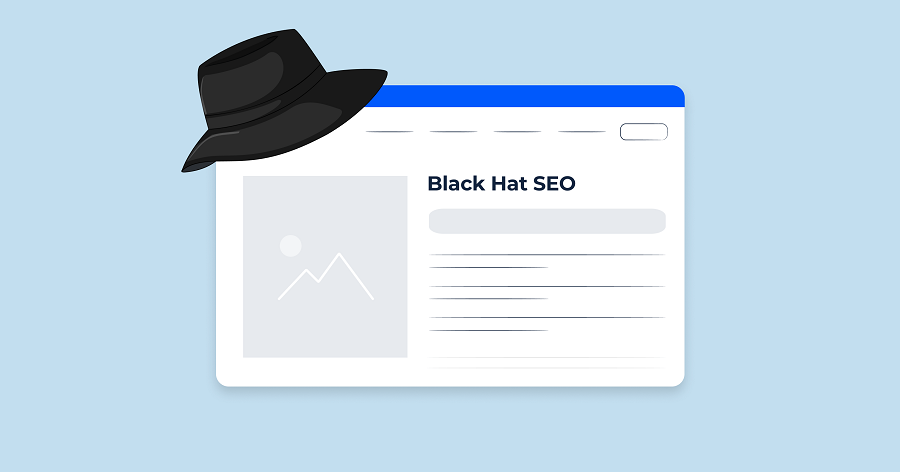Search engine results pages (SERPs) are the gateways through which we access the vast expanse of information on the internet. Whenever you type a query into a search engine like Google, the SERP displays what its algorithms deem to be the most relevant and useful web pages, videos, images, and other digital content related to your search.
While SERPs may seem simple, they have evolved into remarkably complex and feature-rich experiences. Understanding how SERPs work and optimizing your content to rank well is crucial for any business or website looking to drive organic traffic and online visibility.
In this definitive guide, we’ll dive deep into the anatomy of modern SERPs, dissect their various components, explore the rationale behind SERP features, and uncover actionable strategies to help you maximize your search engine visibility and organic traffic potential.
What Is SERP?
SERP stands for “Search Engine Results Page.” It refers to the results page displayed by a search engine like Google, Bing, or Yahoo! after a user enters a search query.
A typical SERP includes:
- Paid advertisements (usually at the top and bottom of the page)
- Organic search results (ranked based on relevance to the query)
- Rich snippets (additional information like definitions, knowledge panels, etc.)
- Related searches and suggestions
The layout and content of a SERP can vary depending on the search query, the user’s location, and the search engine’s algorithms.
Search engine optimization (SEO) aims to rank higher on the SERP for relevant keywords and queries, driving more organic traffic to a website. Understanding how SERPs are structured.
How Do SERP Rankings Work?
SERP rankings refer to the positions at which websites and pages are displayed in the organic search results on search engine results pages (SERPs). Here’s an overview of how SERP rankings work:
Organic Search Result
Organic search results refer to the unpaid, natural listings that appear on search engine results pages (SERPs) based solely on the relevance and quality signals evaluated by the search engine’s ranking algorithms.
Unlike the paid advertisement listings, organic search results cannot be influenced by direct payment or sponsorship. Instead, they are earned through optimization efforts aimed at helping a website’s pages rank as highly as possible for relevant search queries.
Here are some key characteristics of organic search results:
Ranking Based on Merit:
The organic listings are ranked by search engines like Google based entirely on machine learning algorithms that analyze and score websites/pages for relevance, quality, authority, user experience and numerous other ranking factors.
No Paid Placements:
Businesses and websites cannot pay or purchase specific ranking positions within the organic results. High rankings must be earned through optimization and merit.
Identified as “Organic”:
While paid ads are labeled as such, organic results have no identifying tags. They appear as a natural series of blue-colored page titles, URLs and snippets.
The bulk of SERP Real Estate:
Organic search results make up the core content of a SERP. The first organic result appears below any paid ad listings, with subsequent results filling out the remaining sections.
Location Matters:
Organic rankings are ordered hierarchically based on relevance scores, with the most pertinent pages ideally occupying the first few visible positions which get the most clicks.
Optimizing for Organic Results:
To influence organic rankings, websites employ search engine optimization (SEO) best practices encompassing technical, on-page, off-page, and content factors like:
- Using relevant keywords naturally in titles, headings, content, etc.
- Having high-quality, unique, in-depth content
- Earning high-authority backlinks from other websites
- Ensuring a secure site with fast page load times
- Following technical guidelines for crawlers and indexing
- Obtaining positive user engagement metrics
- And many other optimization signals
While more challenging to achieve than paid listings, organic search traffic is extremely valuable as it is earned rather than continuously paid for. Most SEO strategies aim to strike a balance between optimizing for both organic and paid search results.
The higher a search result is shown on the SERP, the more people tend to click on it.
The #1 ranking result is displayed at the top of the SERP, typically receiving the most clicks.
This is followed by the #2 ranking, and so on.
How much do rankings matter? A lot.
According to a study by Backlinko, here are the average click-through rates on Google based on ranking position:
- 31.73%
- 24.71%
- 18.66%
- 13.60%
- 9.51%
And the drop-off continues from there.
In fact, the #1 ranking usually gets 10x more clicks than the #10 ranking.
Paid Search Ad Rankings
Paid search results, also known as paid ads or sponsored listings, are the advertisements that appear on search engine results pages (SERPs). These are listings that advertisers pay for to have their ads displayed prominently when users search for specific keywords related to their business, products or services.
On Google, paid search results are facilitated through the Google Ads platform (formerly Google AdWords). Here’s an overview of how paid search ads work:
How Paid Search Ads Work
- Advertisers bid on keywords they want their ads to display for through the Google Ads interface.
- They create the ad copy, which includes a headline, description, and the URL they want the ad to point to.
- When users search on Google using keywords that match an advertiser’s keyword list, Google runs an automated auction.
- Based on ad auction factors like maximum bid, ad relevance, and expected click-through rates, Google determines where the ads appear on the SERP.
- Paid ads are displayed above the organic listings (sometimes below) and marked with a subtle “Ad” label.
- Advertisers only pay when users actually click on their ad – this is called pay-per-click (PPC) advertising.
Locations of Paid Ads on SERPs The most common locations for paid search ads on Google SERPs include:
- At the top of the page above organic results
- At the bottom of the SERPs
- Within or beside the organic results
- Within other SERP features like Maps listings
Ad Ranking Factors The position and ranking of paid ads on SERPs is determined primarily by:
- Maximum bid amount
- Quality Score (relevance, expected CTR, landing page experience)
- Ad extensions and formats used
- Keyword match type
- Other factors like user location, device, etc.
Paid ads with higher Quality Scores and bids are more likely to show up higher on SERPs.
While paid search ads provide prominent visibility, displaying trusted, relevant, high-quality organic listings is still very important to Google. Paid and organic results complement each other on modern SERPs.
By using paid and organic search strategies together, businesses can maximize their search visibility, web traffic and return on investment from search engine marketing.
SERP Feature Rankings
For SERP features like Featured Snippets, Knowledge Panels, video carousels, etc., Google aims to extract and prominently display what it deems the single best result or data point for that search.
This is based on complex algorithms that evaluate all potential sources’ relevance, quality, and comprehensiveness to populate that SERP feature with the most useful information.
For example, to select which page’s content gets included in the Featured Snippet box, Google analyzes and programmatically scores all page listings ranking on page 1 for that query against numerous quality signals and criteria.
So optimizing specifically for prominent SERP features has become a key part of modern SEO in addition to just targeting the core organic web rankings.
In essence, SERP rankings, whether for regular listings, ads, or special features, aim to match users with the most relevant and highest-quality content sources for their query based on Google’s complex ranking systems and algorithms.
What are the Different Types of Search Queries?
Search queries can generally be classified into three main categories based on the user’s intent behind the search:
Navigational Queries
Navigational queries occur when someone is looking for a specific website or online destination. These are often brand-related searches, like:
- YouTube
- Amazon.com
- Wikipedia
For navigational queries, users typically have a particular website or web page in mind that they want to visit directly. Unless they are specifically searching for your brand, it can be difficult for other websites to rank well for this type of query.
Informational Queries
Informational queries are when users are seeking information, knowledge or answers to a specific question, such as:
- What is the capital of France?
- How to change a tire?
- Symptoms of the flu
- Biography of Martin Luther King Jr.
These queries have an information-gathering intent behind them rather than an intention to make a purchase or visit a specific website. Providing high-quality, thorough, and easily digestible content for informational queries is crucial for ranking well.
Transactional Queries
Transactional queries are conducted when someone intends to complete a transaction like making a purchase, downloading something, or signing up. Examples include:
- Buy running shoes online
- Download Photoshop
- Spotify premium subscription
- Cheap flights to Miami
These queries have strong commercial intent and are highly valuable for e-commerce websites, service providers, membership sites, etc. Paid search ads are very prominent for transactional queries as businesses compete for this commercial traffic.
In addition to these three main categories, there are some other secondary types of queries like:
- Local Queries: Queries looking for nearby businesses, services, or other location-based results (e.g., “plumbers near me”).
- Visual Queries: Queries are issued by uploading an image to initiate a visual search (e.g., Google Lens).
- Voice Queries: Queries spoken aloud rather than typed using voice search technology.
Understanding the type of query and user intent behind it is crucial for optimizing your content, ads, and overall search strategy to match what users are truly looking for when searching those terms.
The Most Common and Important SERP Features
Featured Snippet
A Featured Snippet is a prominent highlight that Google extracts from a single webpage to summarize the most crucial information. These snippets often appear at the top of the organic search engine results page (SERP), occupying what is known as “position #0,” making them one of the most influential SERP features. Featured Snippets can also be displayed within the “People Also Ask” box.
There are various types of Featured Snippets:
- Text-based Snippets: These are heavy on text, like a list-based snippet for “best premium SEO software.”
- Image-based Snippets: Some snippets include images, such as one for the search query “impressionism.”
- Video Snippets: These suggest a clip from an embedded video, like for the keyword “how to sprint.”
People Also Ask
People Also Ask (PAA) boxes list several questions related to the original search query. They typically appear for keywords with commercial or informational search intent. When you click on a question in a PAA box, it expands to reveal a Featured Snippet and a link to launch a new Google search using that question.
Related Searches
Related Searches are keywords connected to the original search query. Clicking on one opens a new SERP with the related keyword. These searches are displayed at the bottom of the SERP and are extremely common. Some Related Searches include images above the list of keywords.
Knowledge Panel
According to Google, Knowledge Panels appear when you search for entities within Google’s Knowledge Graph. A Knowledge Panel includes information from multiple sources and is displayed on the right-hand side of the search results. They often contain associated images, a text description, a list of facts, and links to additional information.
Local Pack
Local Packs display information about nearby businesses and organizations next to an embedded Google Maps view. They appear for search queries that might relate to a local need and show different results based on the searcher’s location. For instance, a Local Pack might be shown at the top of the SERP when someone in New York City searches for “bowling alley.”
Google Flights
For flight-related search queries, Google often displays a Google Flights SERP feature. These can be interactive, providing detailed flight information, or more basic, listing flights to a specific location.
Organic Google Shopping Results
Organic Google Shopping results resemble Google Shopping Ads but are unpaid and do not carry the “Ad” disclaimer. These results are usually displayed as a carousel of products you can scroll through, containing images, product names, brands, retailers, prices, star ratings, and a fact or two about the product.
Image Pack
Image Packs display images on the SERP, and clicking on one takes you to a Google Images search results page. These packs can appear anywhere in the regular search results, either as scrollable carousels or larger packs.
Video Results
Video Results present a collection of videos on the SERP, usually sourced from YouTube. Each video listing can include links to specific timestamps within the video.
Recipes
The Recipes SERP feature displays when you search for recipes. It typically shows a pack of three recipe options with a button to show more.
Direct Answers
Direct Answers provide a brief piece of information at the top of the SERP when Google identifies a query as a simple question. For example, a search for “when is Mother’s Day” will trigger a Direct Answer box with the date.
Top Stories
Top Stories display relevant articles from Google News. For news-related queries, this feature is usually shown at the top of the SERP. For other types of queries, it may appear lower down.
Since 2015, Google has partnered with Twitter to index tweets in real time. You might see their tweets displayed when you search for a business or person active on Twitter. This feature provides additional SERP real estate and can be observed in searches for entities like “Outreach Desk.”
By understanding and leveraging these SERP features, you can optimize your content for better visibility and engagement in search engine results.
Wrapping Up
Understanding the intricacies of Search Engine Results Pages (SERPs) is vital for any business or website aiming to enhance its online presence. SERPs are more than just a list of links; they are complex, feature-rich environments that provide users with quick and relevant information.
From organic search results and paid ads to rich snippets and Knowledge Panels, the various components of SERPs offer multiple opportunities for businesses to gain visibility and attract traffic. By leveraging SEO best practices, creating high-quality content, and understanding user intent, you can optimize your website to perform well on SERPs and achieve your digital marketing goals.
In today’s digital landscape, staying informed about SERP features and updates is essential. As search engines evolve, so must our strategies for maintaining and improving our online presence. With the right approach, your website can stand out in the crowded online space and connect effectively with your target audience.



